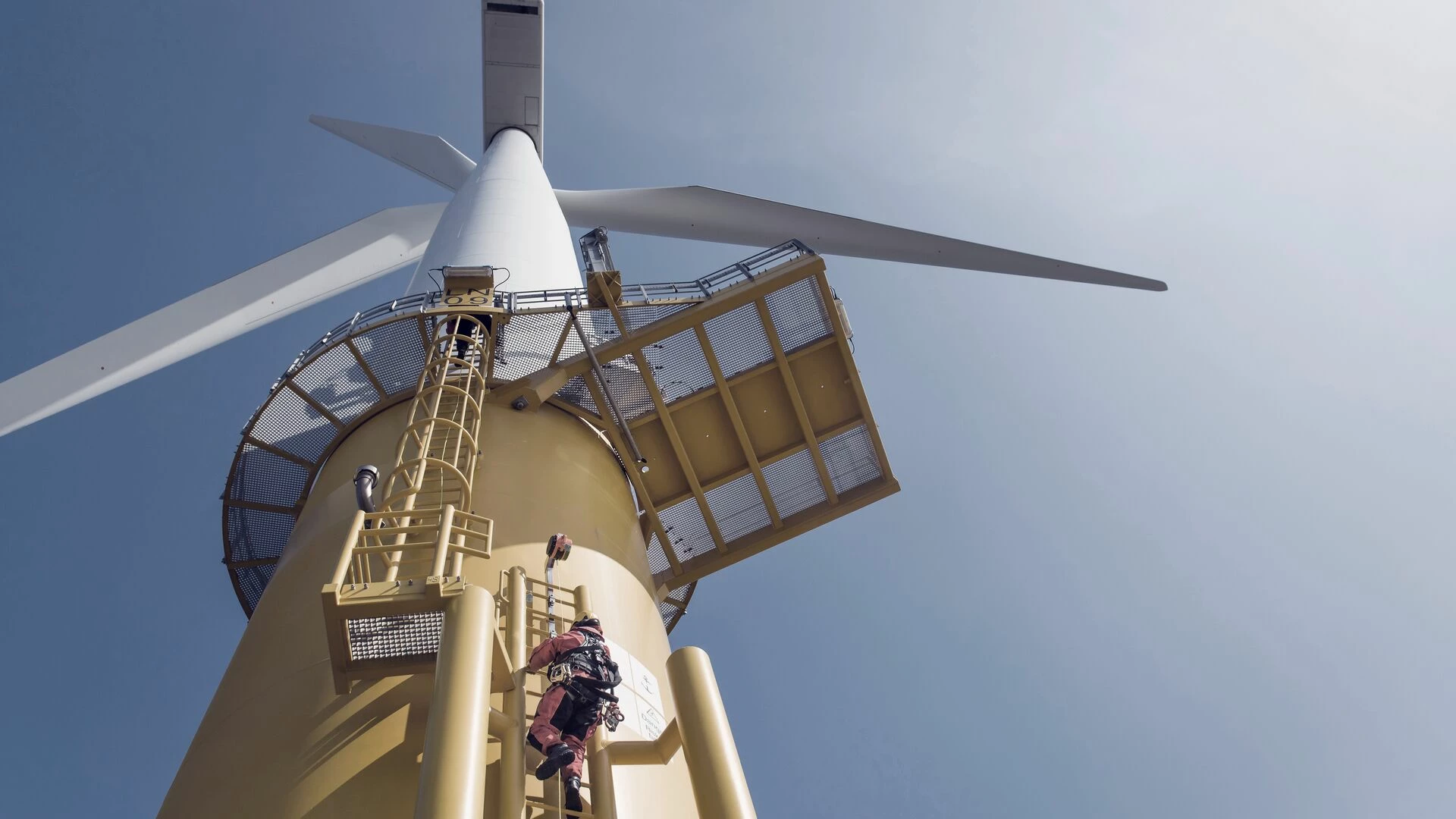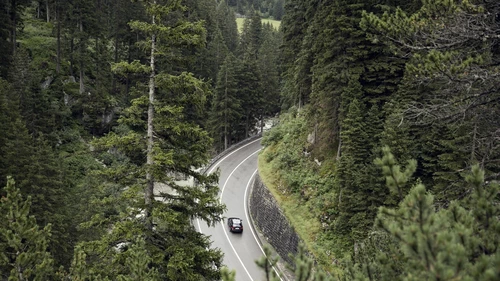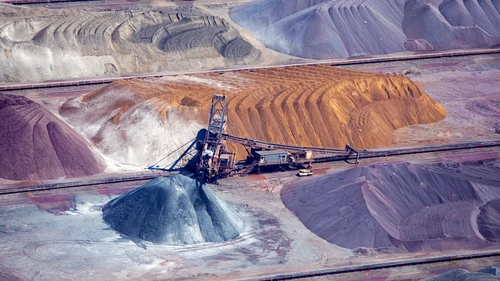
- Name:
- Marco Kisic
- Title:
- Head of ESG Research, Nordea Equities
Den här sidan finns tyvärr inte på svenska.
Stanna kvar på sidan | Gå till en relaterad sida på svenskaMarco Kisic
The EU's Clean Industrial Deal marks a significant shift in strategy, from a stick to a carrot approach, writes Nordea Equities’ Head of ESG Research Marco Kisic. With a focus on boosting European cleantech and protecting heavy industry, the plan introduces a range of initiatives to stimulate demand, increase investments and lower energy costs.

The European Commission in February presented its Clean Industrial Deal, a strategy to revamp the EU clean tech industry and protect the EU’s heavy industry. The proposal will mobilise EUR 100bn in funding in total over 10 years from the EU – a better number than we expected, although we would be cautious in reading too much into the headline number as it is still unclear what the actual incremental fresh money is.
Notably, though, the Clean Industrial Deal reflects an important change in strategy and a pivot from the stick to the carrot approach. It shows that the EU remains committed to the transition and is taking a more flexible and protective stance towards the cleantech space.
The Clean Industrial Deal focuses on creating demand for green products, boosting investments and reducing energy prices. Of the EUR 100bn to be mobilized over 10 years, EUR 20bn will be pulled from the existing EU Innovation Fund, EUR 30bn from voluntary top-ups from member states, EUR 25bn from the EU’s carbon market and EUR 25bn from private funding, according to Politico (accessed 26 February 2025).
Below, we summarise a selection of the measures included.
Buy “Made in EU”
The European Commission wants to set minimum “green EU quotas” for the procurement by public authorities of specific products. The Commission will also assess how to include requirements for private procurement of some products, such as green steel or car batteries. The EU aims to make 40% of the EU’s key clean technology components within the bloc by 2030.
Auto and steel plan
The Commission in March published a strategy to support the auto sector, followed by plans for the steel and metals industry and the chemical sector (later in 2025).
Labels
The measures include introducing new voluntary product labels for industrial goods to show how much CO2 was emitted in the manufacturing process for specific sectors, starting with steel in 2025, followed by cement.
Carbon Border Adjustment Mechanism
The Commission proposes to “substantially simplify” the new carbon border tariff to reduce bureaucratic burdens, but also to look to expand it to new sectors through a revision this year, followed by a legislative proposal next year.
Green hydrogen
There is also a proposal to promote the uptake of green hydrogen, with the help of the European Hydrogen Bank, to be launched later in 2025.
The Clean Industrial Deal focuses on creating demand for green products, boosting investments and reducing energy prices.
Short-term relief
To provide relief to the industry, the Clean Industrial Deal will mobilise EUR 100bn over 10 years in an Industrial Decarbonisation Bank to improve the business case for EU-made cleantech manufacturing. Funding would come from the Innovation Fund, parts of the Emissions Trading System (ETS) and a revision of the InvestEU. The Commission commits EUR 6bn from the Innovation Fund already in 2025.
Industrial Decarbonisation Facility
The Commission will propose a facility for industrial decarbonisation based on the ETS and will pilot it with a EUR 1bn auction, using a combination of existing resources and auction-as-a-service (launch later in 2025).
State aid
The proposal will simplify rules to accelerate the rollout of renewables, industrial decarbonisation and boost cleantech manufacturing capacity (by June 2025).
Support long-term energy contracts
The European Investment Bank (EIB) will launch a EUR 500m pilot plan to offer counter-guarantees to power purchase agreements (PPA) undertaken by businesses, in particular, SMEs.
Accelerate renewables
Measures include installing 100GW/year of new renewables in the period up to 2030 (78GW in 2024). The plan also enables the introduction of new legislation to speed up accelerating renewable energy permits (so far, only seven countries have implemented the EU recommendations).
Grid
The EIB is set to provide EUR 1.5bn (indicative amount) of de-risking support to manufacturers of grid components. The Commission is set to accelerate the expansion and modernisation of grids via easier permitting, better cost-sharing and more efficient planning (European Grid Package, Q1 2026).
The plan also confirms the EU’s intention to stick to its ambitious 2040 climate target of reducing greenhouse gas emissions by 90% by 2040 relative to 1990, which, according to our previous estimates, implies a moderate acceleration versus the current trajectory.
| Flagship actions – Lead markets: Boosting clean supply and demand | Timeline |
| Delegated act on low carbon hydrogen | Q1 2025 |
| Industrial Decarbonisation Accelerator Act | Q4 2025 |
| Legislative proposal on greening corporate fleets | 2025/2026 |
| Revision of the Public Procurement Directives | Q4 2026 |
| KPI – Reach 40% of domestically produced key components of clean tech products | |
| KPI – Decrease external vulnerabilities for Clean Industrial Deal products | |
| Flagship actions – Access to affordable energy and infrastructure | |
| Action Plan on Affordable Energy | Q1 2025 |
| EIB pilot offering financial guarantees for PPA offtakers | Q2 2025 |
| Legislative proposal on the extension of the Gas Storage Regulation | Q1 2025 |
| Clean Industrial Deal State aid framework | Q2 2025 |
| Recommendation on network changes | Q2 2025 |
| Industrial Decarbonisation Accelerator Act | Q4 2025 |
| Recommendation on energy taxation | Q4 2025 |
| Guidance on CfD design, including combining CfDs and PPAs | Q4 2025 |
| Guidance on promoting remuneration of flexibility in retail contracts | Q4 2025 |
| European Grids Package | Q1 2026 |
| KPI – Increase economy-wide electrification rate from 2.1% today to 23% in 2030 | |
| KPI – Annually install 100GW of renewable electricity capacity up to 2030 | |
| Flagship actions – Public and private investment | |
| Increase InvestEU’s risk bearing capacity | Q1 2025 |
| IPCEI Design Support Hub | 2025 |
| Clean Industrial Deal State aid framework | Q2 2025 |
| Recommendation to MS to adopt tax incentives to support CID | Q2 2025 |
| Flagship call under Horizon Europe | Q4 2025 |
| Pilot auction under the Innovation Fund | 2025 |
| Industrial Decarbonisation Bank | Q2 2025 |
| TechEU investment programme on scale-ups with the EIB and private sector | 2026 |
| KPI – Increase total volume of investment supporting industrial transition from EUR 52.7bn | |
Source: European Commission and Nordea


Register below for the latest insights from Nordea’s Sustainable Finance Advisory team direct to your mailbox.
Read more
Sustainable banking
Morningstar Sustainalytics has recently published a new report identifying companies that are taking steps to reduce emissions, set actionable targets and implement good governance practices. Nordea is highlighted for its significant progress in reducing emissions and its comprehensive climate targets.
Read more
Sustainability
Amid geopolitical tensions and fractured global cooperation, Nordic companies are not retreating from their climate ambitions. Our Equities ESG Research team’s annual review shows stronger commitments and measurable progress on emissions reductions.
Read more
Sector insights
As Europe shifts towards strategic autonomy in critical resources, Nordic companies are uniquely positioned to lead. Learn how Nordic companies stand to gain in this new era of managed openness and resource security.
Read more